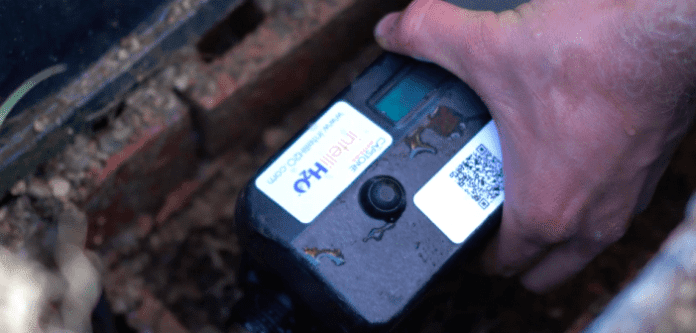Capstone Metering is one of the first customers for AT&T’s LTE-M technology, which the carrier plans to roll out nationwide this year. Unlike the higher categories of LTE that our smartphones use, LTE Category M1 uses very low amounts of bandwidth to send small amounts of data intermittently. It’s perfect for the low-power modems that connect meters and sensors to the network.
Capstone was founded in 2007 by wireless industry veterans who knew the water industry. The founders knew metering and monitoring water use was a growing challenge for the nation’s tens of thousands of water authorities. Their solution is a meter connected to the AT&T network that is sold to water districts as a service. The offiering includes the meter, installation, platform, training, analytics, maintenance, connectivity and cloud database, according to analyst and AT&T adviser James Brehm of James Brehm & Associates.
“Water as service moves the small and medium water districts from a [capital expense] to an [operating expense] model,” Brehm said. “There are 148,000 water authorities across the United States. They serve 98 million service connections, and about a third of those are in the top 20 to 30 cities, the next third are in medium-size cities and then the rest are split across small cities.”
Brehm said the water authorities pay a per-meter fee each month and eliminate the $40 to $100 cost associated with each technician visit to a water meter. Brehm expects the solution to be particularly attractive to smaller districts and Capstone said its technology has already proven useful in some larger cities as well.
A Texas city turned to Capstone two years ago when the state was experiencing a drought. Capstone said that by analyzing data from water meters it was able to help the city reduce water waste in sprinkler systems. Capstone’s analysis showed that each pound of pressure the water district added to the system increased sprinkler output by 1%.
Real-time data from water meters can make a difference to conservation efforts, and Capstone said it is developing algorithms to detect system leaks and push alerts to water authorities.
“EPA estimates up to 26% of water purchased by a city or pumped from a well is lost prior to making it to the tap,” said Brehm. Clearly, there is room for improvement with better reporting and data analysis. Capstone said the LTE-M network is ideal for this use case.
“The lack of actionable data … turns out to be one of the biggest things that we run into,” said Capstone CEO Scott Williamson, in a company video. “The LTE-M technology from AT&T is so important to leverage the future for the industry.”
For more IoT case studies, see the RCR Wireless News report and webinar: Carrier IoT Case Studies.
Follow me on Twitter.

